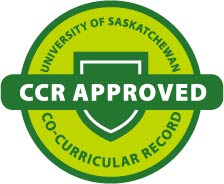An Objective Way to Evaluate Continuity of Care in Residency
DOI:
https://doi.org/10.32396/usurj.v2i1.12Keywords:
continuity of patient care, family practice, medical education, physician-patient relations, internship and residency, primary health careAbstract
Objective: To develop a tool to assess Canadian family medicine residents in regards to continuity of care (COC).
Design: Analysis of the first 100 patient visits of family medicine residents during their four-month block time in the second year of residency. Data was collected between the years of 2009 and 2012 and used to construct standardized curves for COC.
Setting: West Winds Primary Health Centre in Saskatoon, Saskatchewan.
Participants: 36 second-year family medicine residents training at West Winds Primary Health Centre in Saskatoon, Saskatchewan.
Main outcome measures: The number of unique patients that a family medicine second-year resident encounters within the first 100 patient visits of family medicine block time.
Results: Family medicine residents demonstrate individual variation in the number of unique patients they encounter within one hundred patientvisits.
Conclusion: It is possible to develop a tool that can assess second-year family medicine residents in their ability to practise COC. This tool can be used to identify residents in difficulty, such that appropriate interventions can be made early on in their family medicine block time. Further research, involving residents from across Canada, is needed before this tool can be employed in a widespread manner.
Downloads
Published
Issue
Section
License
Articles: USURJ’s current Publication Agreements apply a Creative Commons Attribution-NonCommercial License (CC-BY-NC) by default. The CC BY-NC license lets others remix, tweak, and build upon work non-commercially. The author(s) can choose a different CC license, as outlined in https://creativecommons.org/about/cclicenses/. Please see the PDF for each article to determine what license is applied to that article. Author(s) can also request to reserve all copyright (All Rights Reserved). If there is no indication for articles published before September 2020, assume the author retains all rights beyond those necessary for publication by USURJ. All articles published after September 2020 will apply one of the aforementioned CC licenses. See the Publication Agreement under the Submission Preparation Checklist or Author Guidelines for more information. Artwork: All copyright for the original artwork remains with the artist unless they wish to apply a Creative Commons (CC) license to the artwork. Please see the PDF for each artwork to determine what license is applied to that artwork.







